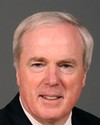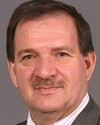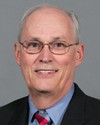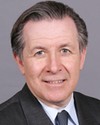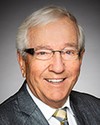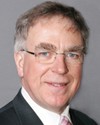Thank you, Mr. Chair and members of the committee. Thank you for the opportunity to meet with you today. As you mentioned, I'm accompanied by Marc Grégoire and Merlin Preuss. I should perhaps say that both are engineers and both also hold a pilot's licence.
At the outset, I would like to say I welcome the opportunity to explain how Transport Canada is improving its approach to the oversight of aviation safety in Canada and to answer any questions you may have regarding the report of the Auditor General.
Mr. Chair, I did read carefully the transcript of the exchange that took place in this committee when the Auditor General appeared on May 8, and I would like to clarify a number of points.
First of all, Transport Canada is not transferring or delegating its responsibility, be it to airline companies or maintenance companies. As the Auditor General explains very clearly in her report, the department is adopting a new approach to oversight based on the implementation of what we call safety management systems. The approach requires aviation companies to have in place a system for managing safety risks linked to their operations. Transport Canada's oversight is changing from one focused only or solely on conducting inspections and audits to one of assessing the process that companies have in place to ensure safety. The department's overall accountability, however, remains unchanged.
Second, I want to assure you that Transport Canada has no intention of stopping its inspections of aircraft and aviation activities. The department will continue to conduct direct inspections and audits when required. It will continue to set regulations and standards and to apply enforcement measures such as fines and licence suspensions, and we do do that.
Actually, as Mr. Christopherson said on May 8, “...we haven't transferred any of that responsibility. We've actually built a secondary area of responsibility.” This is precisely what safety management systems are expected to achieve. They are bringing an additional layer, an additional level, of assurance that safety objectives are being met.
Third, ICAO, the International Civil Aviation Organization, strictly speaking, does not prescribe the approach that sovereign states should take in meeting their aviation safety obligations. Having said that, ICAO, which is certainly the uncontested world authority on civil aviation matters, has stated unequivocally that member states should establish an acceptable safety management system by 2009 in light of two considerations: expected growth in air traffic, and limitations we are indeed encountering with traditional approaches to civil aviation oversight--and we can elaborate on that later, if you wish.
Fourth, we believe the transition to safety management systems in Canada has been successful to date. It's important to mention that chapter 3 of the Auditor General's report—and Mrs. Fraser repeated earlier—does not question the safety of the travelling public. The audit evaluated, from an administrative perspective, how Transport Canada is managing the transition to a safety oversight approach based on safety management systems.
Fifth, Canada has the safest air transportation system in the world and our safety performance continues to improve. The accident rate in the commercial airline sector, which accounts for more than 95% of fare-paying passengers in Canada, is very low. Between 2002 and 2006, the rate of accidents was 0.31 per 100,000 hours flown. Take a one-hour flight, say, between Ottawa and Toronto: you would have to fly between Ottawa and Toronto more than 300,000 times before being involved in an aviation accident.
The implementation of aviation SMS is well advanced and we are applying lessons learned to each subsequent stage. In that context, Transport Canada welcomes and accept all nine recommendations contained in the Auditor General's report.
All responses to each recommendation on planning for the transition, monitoring of compliance and human resources planning and training are outlined in the Auditor General's report and we will be pleased to elaborate on any of them, if need be.
Regarding human resources, I would simply like to bring to your attention that the number of inspector positions at Transport Canada has actually increased from 866 in fiscal year 2001-2002 to 871 today. I chose this period, because it is the one covered in the audit. However, over 15 years, the number of inspectors at Transport Canada has increased by 295 since 1992.
However, we do have a normal number of vacancies. Ms. Fraser is correcting pointing out that not all positions are staffed. This is as a result of open staffing actions and all the procedures that have to be followed. I shall also point out that we are having trouble finding qualified candidates who are willing to accept the pay rates offered by the government.
Human resources planning is now more tightly focused on recruitment and retention issues. We need to identify the skills and resources required to deliver the future programs.
Finally, I would like to take this opportunity to recognize the level of cooperation that has prevailed throughout the audit between Transport Canada's aviation professionals and the Office of the Auditor General. We do believe that our safety management systems and the safety of the traveling public will benefit from this audit.
Thank you.

